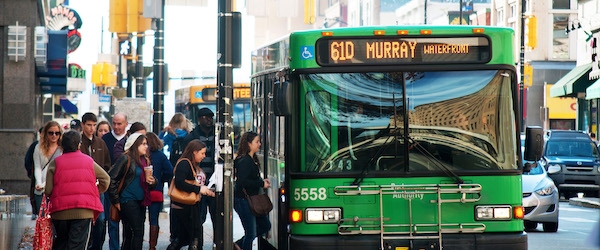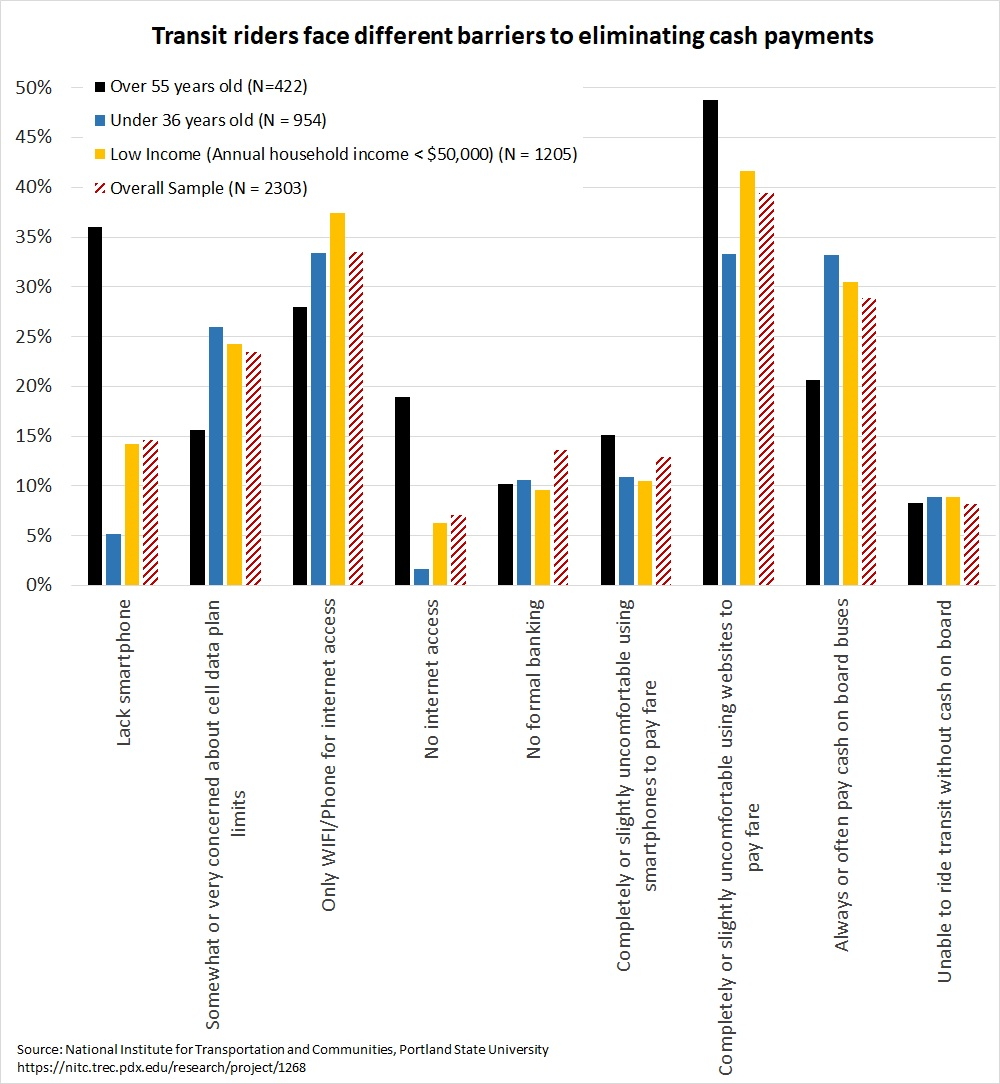The Hidden Costs of Removing the Option to Pay for Transit With Cash?

Image by Luije/iStock
Authored by Aaron Golub Director and Associate Professor, Nohad A. Toulan School of Urban Studies and Planning at Portland State University. Join Aaron and John MacArthur on May 22nd for a PSU Friday Transportation Seminar sharing early results from the research presented here.
With many transit agencies across the country1 eliminating cash handling at ticket counters and on-board vehicles for obvious health and virus transmission reasons, one may wonder: who will be negatively impacted by this?
Some riders can still use cash at ticket vending machines or at certain retail outlets, but for many, depending on where they live and which parts of the transit system they ride, this will be inconvenient. National data2 show clear disparities3 in access to alternatives to cash (credit and debit accounts) as well as the other tools needed to pay for things electronically (smartphones, cell data plans and internet at home and work). What these national data don't capture are the specific issues facing transit riders.
An ongoing research project at Portland State University’s National Institute for Transportation and Communities4 is addressing this question directly. Using surveys of over 2300 transit riders in Denver, Colorado, and Eugene, Gresham and Portland, Oregon, the project is investigating how the long-term elimination of cash as a transit payment medium will affect riders, and what agencies can do to assist their most vulnerable riders to ease the transition.
The project is ongoing, but preliminary results shown in the Figure below address the question raised above - who will be negatively impacted by the elimination of on-board cash payments? While the sample is not representative of riders in all contexts (no major metro areas or small town or rural transit systems were surveyed), the general results show there are some important disparities agencies should be ready to address if cash is eliminated on a longer-term basis after the COVID-19 pandemic situation passes:
- Access to smartphones and internet and comfort using cashless payment systems is lower for our older survey respondents.
- A significant number of respondents do not use the formal banking system and almost 30% still rely heavily on cash to pay their fare.
- More than 30% of our respondents rely on WIFI as their sole source of internet connectivity.
- Almost 10% of our respondents claimed they could no longer ride if cash payments on board were eliminated.

ABOUT THE AUTHOR
Aaron Golub, Portland State University

Aaron Golub is an associate professor in the Toulan School of Urban Studies and Planning at Portland State University (PSU), moving to PSU after eight years at Arizona State University and ten years studying and working in the San Francisco Bay Area. His work focuses on the social contexts of urban transportation systems, explored in three ways: 1. the effects on social equity of current transportation planning practices – how people participate in planning, and who wins and loses from transportation plans, 2. planning, research and advocacy in support of alternatives to the automobile (especially public transportation and bicycles), and 3. the historical roots of automobile dependence in the United States. At PSU, Dr. Golub teaches courses on urban transportation policy, planning research methods, transportation finance and public transportation.
The Transportation Research and Education Center (TREC) at Portland State University is home to the National Institute for Transportation and Communities (NITC), the Initiative for Bicycle and Pedestrian Innovation (IBPI), and other transportation programs. TREC produces research and tools for transportation decision makers, develops K-12 curriculum to expand the diversity and capacity of the workforce, and engages students and professionals through education.
